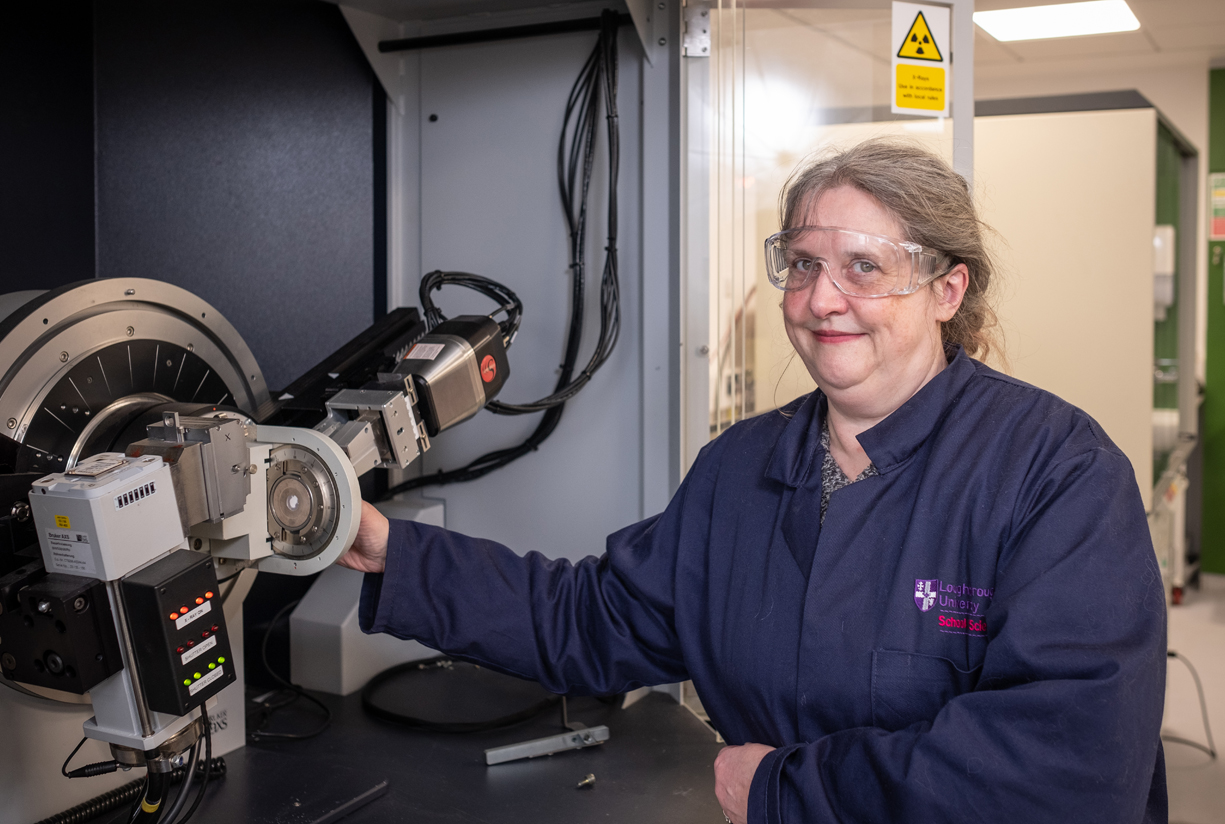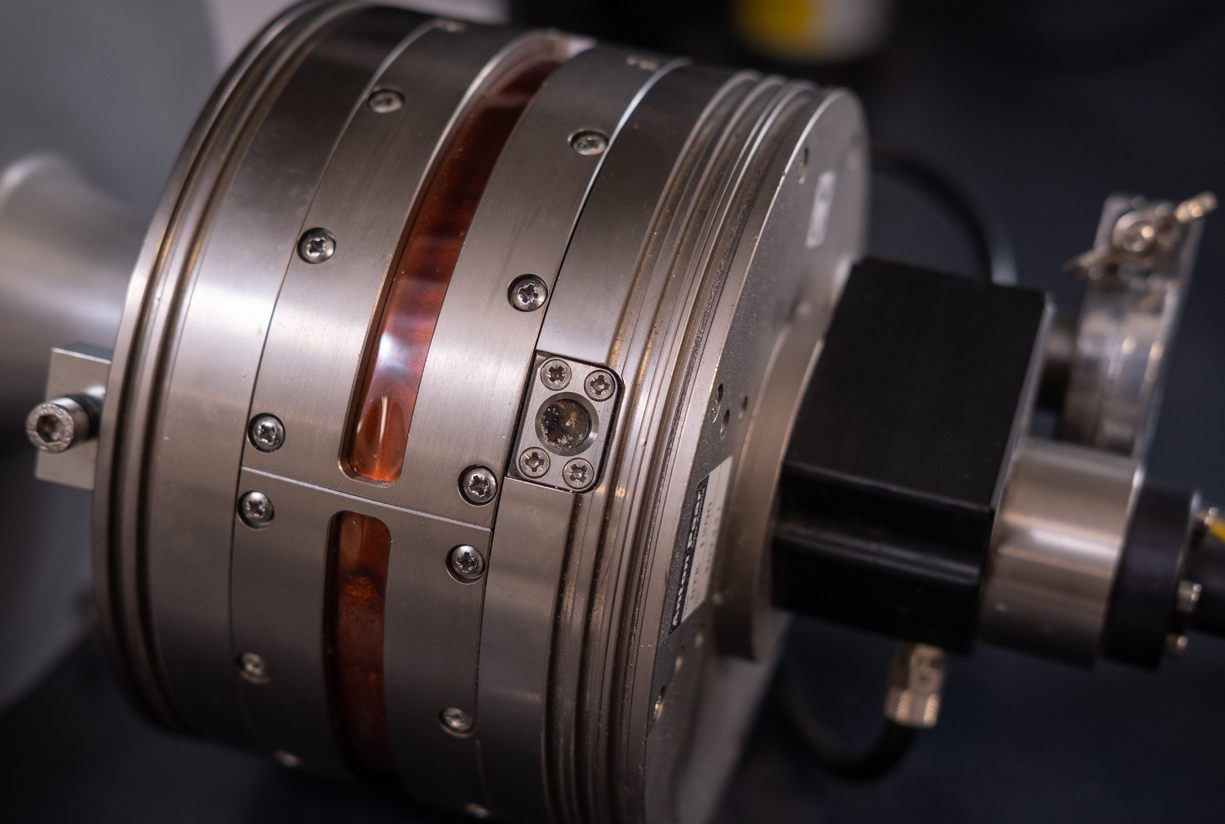Professor Sandie Dann
Professor in Materials Chemistry – Chemistry
Professor Sandie Dann has been a Lecturer at Loughborough since 1997. In that time, her research interests have expanded into several areas, and she grown an international network of collaborators. She is expert in the synthesis of materials, including using high temperature and pressure as well as the characterisation of products by powder diffraction and spectroscopy. She leads the Powder X-ray Diffraction Consultancy and the SlowCat mini-CDT which is exploring the production of biofuels and fine chemicals from waste.
Creating catalysts for change
Catalysts play diverse and important roles in just about every industry spanning manufacturing, waste management and pharmaceuticals. They also have an important part to play in the energy sector, easing our transition from fossil fuels to greener energy. Working together, Loughborough’s scientists and engineers are developing safe and sustainable ways to use catalysts in the transformation of waste materials into biofuels and platform chemicals – supporting the tenets of the Paris Agreement to reduce harmful emissions and safeguard our planet.
I’m a materials chemist – my research expertise lies in determining structure-property relationships in solids to improve their physical and chemical properties by understanding and controlling their composition and form.
Over the years, I’ve worked with a lot of substances – including pigments, ion exchangers and catalysts – with applications across a range of sectors, spanning pharmaceuticals, manufacturing, and hydrogen generation.
For example, I’ve been involved in several international collaborations to develop environmentally friendly pigments, including ultramarine blue and I hold a patent for tin niobium oxysulfide red-yellow pigments. Pigments are used in everyday plastic and ceramic products so eliminating the use of toxic materials in their production is essential for both the environment and consumers.

Meanwhile, hydrogen generation and fuel cells are exciting, fast-moving areas of research – gamechangers in the clean, sustainable production of energy.
I’m part of the Sustainable Hydrogen Centre for Doctoral Training (SusHy CDT). Our aim is to provide future research leaders with the transdisciplinary skill set needed to transition hydrogen innovations into the energy system.
The CDT is also a member of Women in Science and Engineering, supporting the campaign to promote gender balance in STEM. I work hard to provide an inclusive, supportive learning environment for all students – and am keen to fix the leaky pipeline so that more women are involved in STEM across both academia and industry.
Advancing the safe, sustainable production of biofuels will help ease the transition from fossil fuels – supporting and supplementing other alternative energy technologies like wind and solar.

Another exciting venture I’m leading is the mini-CDT, SlowCat (Securing a Sustainable Future using Low Dimensional Catalysts). Along with seven other Loughborough engineers and scientists, I’m supporting seven PhD students who are exploring the regeneration of materials from waste.
Our goal is to design the bespoke, multidimensional bioprocessing catalysts that enable production of fuels (including hydrogen) and platform chemicals (for example, isopropanol and propylene) from diverse waste streams, including fermentation and biomass.
Advancing the safe, sustainable production of biofuels will help ease the transition from fossil fuels – supporting and supplementing other alternative energy technologies like wind and solar.
My research journey
I grew up fascinated by science and nature. At school, I was good at mathematics and always thought I would follow my brother’s footsteps in studying the subject at degree level. However, while taking my A-levels, my chemistry teacher nominated me and another student to take part in a pheromone project for a CREST Gold Award. As part of this, we spent time at Rothamsted Research which was fantastic.
So, starting at University, I switched from maths to chemistry and never looked back. I couldn’t leave practical science behind – finding out new things in the lab still excites me as much now as it did then.
I studied at the University of Southampton, completing both my BSc in Chemistry and PhD in Materials Chemistry there. My PhD involved using high-pressure oxygen (up to 700 bar) to access unusual oxidation states of the late transition metals including iron, nickel and cobalt.
It’s here that I first started using powder X-ray diffraction for phase identification and structure solving, using Rietveld as well as thermal analysis. I also spent time in Liverpool carrying out Mössbauer spectroscopy and worked with physicists on magnetic measurements, learning the benefits of collaboration.
This also gave me the opportunity to spend a lot of time at central facilities – including the Rutherford Appleton Laboratories and Daresbury – building up a lot of experience in a variety of characterisation techniques like powder neutron diffraction and EXAFS.
After my PhD, I stayed in Southampton for a further three years in a postdoctoral position, designing and building a high-pressure hydrothermal rig – learning to weld gold, cone and thread high-pressure tubing, and seal glass ampoules.
I also learnt new characterisation techniques including Solid State Nuclear Magnetic Resonance Spectroscopy and Raman spectroscopy to study local environments in frameworks and electron microscopy to image the shape of crystals.
In 1997, I came to Loughborough to take up a Lectureship, and was promoted to Senior Lecturer just three years later. Following various roles and responsibilities – including four years as Associate Dean for Teaching where I developed an interest in Academic Integrity research – I was promoted to Chair in 2019.
Throughout my career, I’ve felt that nurturing public understanding of science is important and have presented at too-many-to-count science fairs and festivals.
I was involved in the Creating a Colourful Life project (2005-07) with a range of partners, including Merck, Holiday Pigments and Johnson Matthey. Our aim was to raise public awareness of colour and coloured materials via workshops, lectures and events, including TechFest (IIT Mumbai, January 2008).
Over the years, I’ve been involved in a variety of projects with numerous industrial and academic collaborators including Kindeva (formerly, 3M Healthcare), the National Nuclear Laboratory and Intelligent Energy.
Working with industry to help solve problems in real-world applications and improve understanding builds relationships that can lead to new projects by demonstrating the value of techniques and equipment first available and developed in universities.
Going forward, I will continue to look for projects which allow me to apply my materials chemistry knowledge – relating structure properties and developing new understanding. This strategy has always given me the most impactful results and greatest motivation.
